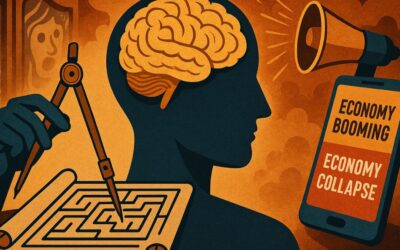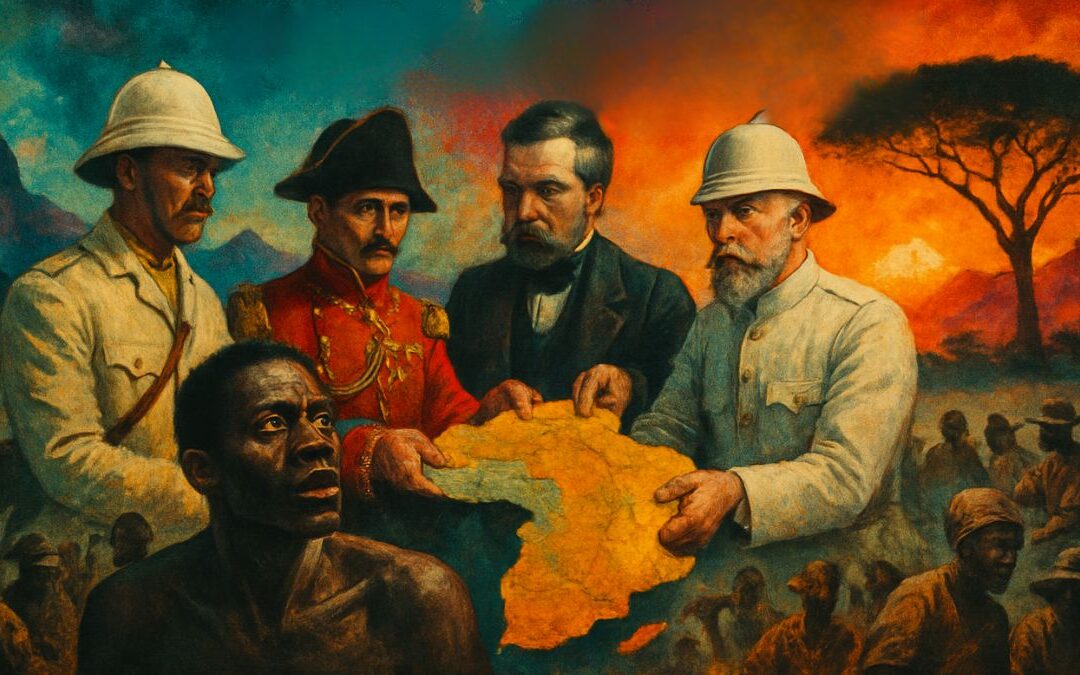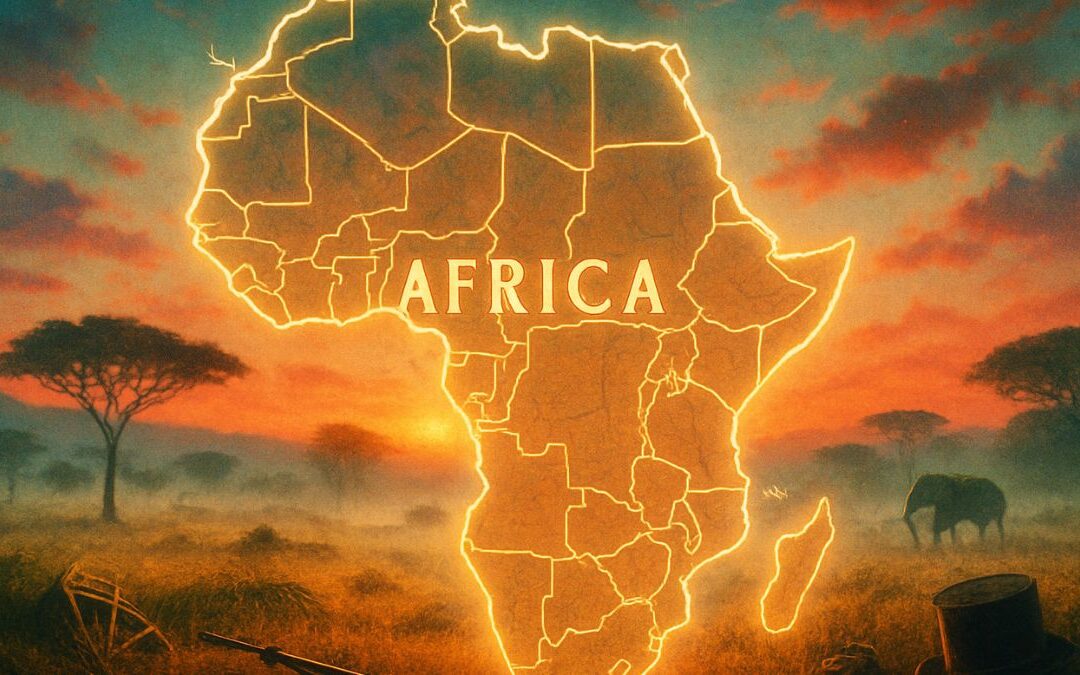Introduction
In this episode of English Plus, we take a deep dive into the captivating world of urban legends. We discuss the origins and cultural significance of these eerie tales, the role of media and communication in their dissemination, and the importance of critical thinking and debunking in separating fact from fiction. Additionally, we provide a language focus on essential terms, phrases, idiomatic expressions, and concepts related to urban legends to help enhance your English vocabulary. Tune in and join us on this exciting journey through the world of urban legends.
Audio Episode
Interactive Transcript
Text Transcript
[Theme music fades out]
Danny:
Hey there, English Plus listeners! I hope you’re ready for an adventure into the mysterious, spine-chilling, and sometimes downright hilarious world of urban legends! That’s right, in today’s episode, we’re diving deep into those creepy tales that have been keeping us awake at night or making us think twice before venturing into dark alleys. And, as always, we’ll be exploring these stories in the context of the English language. So, buckle up, and let’s get ready for a wild ride!
You know, urban legends are kind of like the gossip of the supernatural world. They get passed around from person to person, growing and changing with each retelling. Sometimes they’re cautionary tales to keep us on the straight and narrow, other times they’re just too bizarre not to share. But one thing is for sure – they’re an essential part of our cultural tapestry, and today we’re going to unravel some of their most fascinating origins.
We’ll be taking a trip around the globe, visiting legends from the USA, Japan, and even those that were born on the internet itself. As we explore, we’ll also be uncovering the common themes that unite these hair-raising tales and how they reflect our deepest fears and beliefs.
So, dear listeners, grab your flashlights and gather ’round the proverbial campfire, as we embark on this thrilling journey into the heart of urban legends. And don’t worry, I promise I’ll be right here with you, holding your hand every step of the way… well, metaphorically speaking, of course!
[Upbeat transition music]
Danny:
Alright, folks, before we dive into the deep end with specific urban legends, let’s take a moment to understand what urban legends are and why they’re so captivating. You see, urban legends are modern folklore – stories or myths that are shared among people, often with a twist of horror or humor. They’re usually told as if they’re true, even though they’re often just figments of our collective imagination. But that’s what makes them so intriguing, right? We just can’t help but wonder, “What if…?”
Urban legends, like any good story, have a way of tapping into our emotions, whether it’s to make us laugh, cry, or shudder in fear. They can be cautionary tales warning us of the dangers lurking in the shadows or serve as a reminder to listen to our gut instincts. And sometimes, they’re simply born out of our innate love for a good mystery.
Now, why should we care about the origins of these spooky tales? Well, understanding where urban legends come from helps us to appreciate the cultural beliefs and fears that gave birth to them. They often reflect the anxieties and concerns of the society in which they emerged, making them a fascinating lens through which to view human nature.
So, are you ready to dive into some of the most famous urban legends and their origins? I can feel the anticipation in the air! Or, maybe that’s just the ghostly presence of an urban legend waiting to be told… Either way, let’s move on to our first chilling tale!
[Transition music]
Danny:
Alright, folks, it’s time to delve into some of the most popular urban legends from around the world and uncover their mysterious origins. Don’t worry, I’ve got your back as we venture into these eerie tales.
[Transition music]
Danny:
Let’s kick things off with a classic American urban legend – The Hook. Picture this — a young couple parked in a secluded spot, enjoying a romantic evening, when suddenly, the radio interrupts with a news bulletin. A dangerous criminal with a hook for a hand has just escaped from a nearby mental institution. As fear sets in, the couple decides to leave, but upon reaching home, they find a bloody hook hanging from the car door handle. Yikes!
The Hook story dates back to at least the 1950s, and it’s believed to be a cautionary tale warning young people about the dangers of being alone in isolated places. The legend plays on the fears of the unknown, as well as the potential consequences of not taking warnings seriously. The story has been retold and adapted in various forms, from urban legend collections to horror movies, making it a true staple of American folklore.
[Transition music]
Danny:
Next up is the chilling tale of The Vanishing Hitchhiker. This urban legend has many variations, but the core of the story remains the same — a driver picks up a hitchhiker, usually a young woman, who then disappears without a trace during the journey. Sometimes, the driver later learns that the hitchhiker was actually the ghost of someone who died tragically years before.
This eerie tale has roots in many cultures, with versions dating back centuries. It’s thought to tap into our fears of the unknown and the idea that our actions can have unforeseen consequences. The Vanishing Hitchhiker also highlights the human desire to connect with the afterlife and explore the mysteries of the supernatural world.
[Transition music]
Danny:
Now, let’s move from ancient legends to a more modern one born on the internet – The Slender Man. This unnerving figure is often depicted as a tall, thin man with a featureless face and elongated limbs, lurking in the shadows and preying on unsuspecting victims. The Slender Man’s origins can be traced back to a 2009 online forum, where a user posted manipulated photos with the eerie figure lurking in the background.
The Slender Man rapidly gained popularity through online storytelling, known as “creepypasta,” and soon became a widely recognized urban legend. This digital boogeyman reflects our modern fears of the unknown lurking in the depths of the internet and the power of collective storytelling in shaping our reality.
[Transition music]
Danny:
Finally, let’s head over to Japan for the terrifying tale of Kuchisake-onna, or the Slit-Mouthed Woman. According to the legend, Kuchisake-onna is a vengeful spirit with a disfigured face, who approaches her victims and asks them if they think she’s beautiful. Answering “yes” or “no” both result in a grisly fate, and there’s seemingly no way to escape her wrath.
Kuchisake-onna’s origins can be traced back to the Edo period in Japan, though the story gained widespread popularity in the late 20th century. This haunting tale is thought to embody the darker aspects of beauty standards and the potential consequences of vanity, as well as the fear of urban spaces and the unknown dangers that may lurk within them.
[Transition music]
There you have it, folks – four spine-tingling urban legends from around the globe. Each of these stories captures our imagination and reflects the cultural beliefs and fears of their respective societies. But as we’ve seen, they also share some universal themes that connect us all. So, as we continue our journey through the world of urban legends, let’s take a closer look at the common threads that weave these captivating tales together.
[Transition music]
Danny:
Now, you might be wondering, what do all these urban legends have in common? Well, there are a few recurring themes that tend to pop up in these spine-chilling tales. Let’s break down some of the most prevalent ones:
- Fear — Urban legends often play on our most primal fears, whether it’s the fear of the dark, the unknown, or the supernatural. These stories tap into our deep-seated anxieties, making them both thrilling and terrifying.
- Morality — Many urban legends serve as cautionary tales, warning us about the potential consequences of immoral or dangerous behavior. They often involve characters who meet a grisly fate as a result of their actions, reinforcing cultural values and norms.
- Cautionary tales — Closely related to morality, cautionary tales remind us to be careful in our daily lives, urging us to pay attention to our surroundings and listen to our instincts. Urban legends often highlight the potential dangers that lurk in seemingly innocent situations, reminding us to always be vigilant.
As we explore the realm of urban legends, it’s fascinating to see how these themes resonate with people across different cultures and time periods. They reflect our shared human experiences, fears, and values, making them an essential part of our global cultural fabric.
[Transition music]
Now that we’ve uncovered some of the common threads that connect urban legends, let’s take a look at the role that media and communication have played in spreading these chilling tales throughout history. From oral storytelling to modern social media, the way we share and experience urban legends has evolved, but their allure remains as strong as ever.
[Transition music]
Danny:
So, we’ve seen how urban legends have captured our imaginations and played on our deepest fears. But how do these spine-chilling stories spread so far and wide? The answer lies in the power of media and communication. Let’s delve into the role these forces have played in the evolution and dissemination of urban legends.
[Transition music]
Oral Storytelling — Long before the invention of the printing press or the internet, people shared stories through the age-old tradition of oral storytelling. Passed down from generation to generation, urban legends evolved with each retelling, taking on new characteristics and adapting to the cultural context of their listeners. This dynamic process allowed urban legends to become deeply ingrained in the fabric of society, shaping our collective consciousness.
Newspapers — As print media became more prevalent, newspapers became a powerful vehicle for spreading urban legends. Whether through sensational headlines, gossip columns, or even advice columns, stories of mysterious occurrences and eerie encounters captured the public’s imagination and fueled the spread of urban legends.
The Internet — With the rise of the internet, urban legends found a new platform to thrive. Online forums, chat rooms, and websites dedicated to sharing creepy tales allowed urban legends to reach a wider audience than ever before. The ease and speed of communication on the internet enabled these stories to evolve and spread rapidly, often blurring the line between fact and fiction.
Social Media — In the age of social media, urban legends have taken on new forms and found new ways to spread. Viral posts, memes, and videos can quickly catapult an urban legend into the public consciousness, often giving rise to new variations and adaptations. The interactive nature of social media also allows users to participate in the creation and dissemination of urban legends, making them an ever-evolving part of our digital landscape.
Creepypasta — A modern manifestation of urban legends, “creepypasta” is a term derived from the words “creepy” and “copypasta” (itself a play on “copy-paste”). Creepypasta refers to short, scary stories that are shared and reposted across the internet, often in forums or on dedicated websites. These tales have given rise to a new generation of urban legends, tapping into our fears and anxieties in the digital age.
[Transition music]
So, as we can see, media and communication have played a crucial role in the evolution and spread of urban legends throughout history. From whispered stories around the campfire to viral posts on social media, these chilling tales continue to captivate and terrify us, remaining a vital part of our cultural landscape. And as technology advances, who knows what new forms urban legends will take in the future?
Danny:
Alright, folks, we’ve explored the fascinating world of urban legends and how they spread through different forms of media and communication. But as intriguing as these stories are, it’s essential to separate fact from fiction. That’s where debunking comes into play. In this segment, we’ll discuss the role of fact-checking and debunking in the context of urban legends, share some examples of how these tales have been proven false, and talk about the challenges of debunking in the age of the internet and social media.
[Transition music]
Fact-Checking and Debunking — Urban legends have a way of worming their way into our minds, making us wonder if there might be a grain of truth hidden within the story. To separate fact from fiction, it’s crucial to engage in fact-checking and debunking, which involves investigating the origins and veracity of these tales. By debunking urban legends, we can demystify them, reducing their power to instill fear or perpetuate false beliefs.
Examples of Debunked Urban Legends — Over the years, many urban legends have been debunked or proven to be false. For instance, the myth of alligators living in the sewers of New York City has been debunked by experts and city officials. Similarly, the tale of “The Kidney Heist,” where a victim is drugged and wakes up in a bathtub with a missing kidney, has been thoroughly investigated and found to have no basis in reality.
Challenges in the Digital Age — While debunking urban legends is essential, the rise of the internet and social media has made this task increasingly challenging. With the ease of sharing and the viral nature of online content, false stories can spread rapidly before they can be debunked. Additionally, the sheer volume of information available online can make it difficult for individuals to discern between reliable sources and misinformation.
To overcome these challenges, it’s essential to cultivate critical thinking skills and promote media literacy. By encouraging individuals to question the information they encounter and verify its authenticity, we can help stem the tide of urban legends and misinformation in the digital age.
So, there you have it – a brief overview of the role of fact-checking and debunking in the realm of urban legends. As we continue to explore these fascinating tales, it’s important to remember the power of critical thinking and the importance of separating fact from fiction. After all, the truth can sometimes be stranger – and more compelling – than the wildest urban legend!
[Transition music]
Danny:
Alright, before we wrap up this episode, let’s dive into our language focus. In this segment, we’ll highlight some of the keywords, phrases, idiomatic expressions, and concepts related to urban legends that we’ve mentioned throughout the episode. Understanding these terms will not only enrich your English vocabulary but also help deepen your understanding of the fascinating world of urban legends.
- Urban Legends — These are widely circulated, often eerie or frightening stories that are told as if they are true. Urban legends typically have a basis in local folklore and are passed down through generations or shared among communities.
Example — “I love hearing urban legends from different countries; they reveal so much about their cultures and beliefs.”
- Cautionary Tale — A cautionary tale is a story that serves as a warning about the potential dangers or negative consequences of certain actions or behaviors. These tales often include a moral or lesson to teach the listener.
Example — “The story of the hook-handed man is a cautionary tale that warns young people about the dangers of being alone in isolated places.”
- The Unknown — This term refers to something that is not known, understood, or experienced. In the context of urban legends, the unknown often plays a significant role in creating a sense of fear or unease.
Example — “Urban legends often tap into our fears of the unknown, such as supernatural forces or hidden dangers.”
- Debunk — To debunk something is to expose its falsehood or to prove that it is not true. In the context of urban legends, debunking involves investigating the origins and veracity of the tales to separate fact from fiction.
Example — “The myth of alligators living in the sewers of New York City was debunked by experts who found no evidence to support the claims.”
- Media Literacy — This term refers to the ability to access, analyze, evaluate, and create media in a variety of forms. It includes understanding how media messages are constructed, evaluating the credibility of sources, and recognizing potential biases or misinformation.
Example — “Promoting media literacy is essential in helping people distinguish between reliable information and urban legends or other false stories.”
- Critical Thinking — Critical thinking is the process of actively analyzing, evaluating, and reflecting on information in order to make informed decisions or judgments. Cultivating critical thinking skills is important for debunking urban legends and assessing the authenticity of information.
Example — “By teaching critical thinking skills, we can help individuals question the authenticity of the urban legends they encounter and separate fact from fiction.”
- Oral Storytelling — This term refers to the sharing of stories, history, and knowledge through spoken word, rather than written text. Oral storytelling is a traditional way of passing down information, including urban legends, from one generation to another.
Example — “Oral storytelling has been crucial in preserving and sharing urban legends within communities throughout history.”
- Primal Fears — These are the deeply-rooted, instinctive fears that are common to humans across cultures and throughout history. Urban legends often tap into these primal fears to evoke strong emotional responses from listeners.
Example — “The fear of the dark is a primal fear that many urban legends exploit to create a sense of unease and terror.”
- Sensational — Something sensational is extremely interesting, exciting, or attention-grabbing, often because it is shocking, scandalous, or controversial. In the context of urban legends, sensational stories are more likely to capture people’s attention and spread quickly.
Example — “Sensational urban legends often make headlines and become widely circulated because they evoke strong emotions in readers.”
- Blurring the Line — This phrase refers to the situation when the distinction between two things becomes unclear or indistinct. In the case of urban legends, the line between fact and fiction often becomes blurred, making it difficult to discern the truth.
Example — “The widespread sharing of urban legends on the internet has blurred the line between fact and fiction for many people.”
- Ingrained — When something is ingrained, it is firmly established or deeply rooted in a person or thing. Urban legends can become ingrained in societies when they are passed down through generations and widely believed to be true.
Example — “Some urban legends are so ingrained in our culture that it’s hard to imagine a time when they didn’t exist.”
- Viral — In the context of media and communication, something that becomes viral spreads rapidly and widely, often through the internet or social media. Urban legends can become viral when they are shared and reposted by many people in a short period of time.
Example — “The story of the haunted doll went viral, with millions of people sharing it on social media within just a few days.”
- Creepypasta — This term is derived from the words “creepy” and “copypasta” and refers to short, scary stories that are shared and reposted across the internet, often in forums or on dedicated websites. Creepypasta stories represent a modern manifestation of urban legends.
Example — “I spent all night reading creepypasta stories and couldn’t sleep because I was so scared.”
- Shared Fears — These are fears that are common to many people, often across different cultures and societies. Urban legends often tap into shared fears to create a sense of connection and resonance among listeners.
Example — “The fear of being watched or followed is a shared fear that many urban legends exploit to create tension and unease.”
- Anecdotal Evidence — This term refers to evidence based on personal accounts, stories, or experiences, rather than on systematic research or objective data. Anecdotal evidence is often used to support urban legends, even though it may not be reliable or verifiable.
Example — “While there’s plenty of anecdotal evidence for the haunted house, there’s no concrete proof that it’s actually haunted.”
[Transition music]
Danny:
Wow, what a journey we’ve had today exploring the captivating and eerie world of urban legends and their origins! We’ve discussed the cultural significance of these tales, the role of media and communication in their spread, and the importance of critical thinking and debunking in separating fact from fiction. We’ve also enriched our English vocabulary with a plethora of keywords, phrases, idiomatic expressions, and concepts related to urban legends.
As we wrap up this episode, I want to thank you all for joining me on this fascinating exploration. Remember to approach the stories you hear with a critical eye, question their authenticity, and share your newfound knowledge about the enthralling world of urban legends with others.
Now, if you enjoyed this episode, I have a small request for you. Please take a moment to follow the English Plus podcast, rate and review it on your preferred podcast platform, and share it with your family and friends. Your support helps us continue to create content that is both educational and entertaining, and it means the world to us.
Stay tuned for more exciting topics and language lessons in our upcoming episodes. Until next time, stay curious, keep learning, and don’t forget to share the spooky tales that make our world so much more intriguing! This is your host, Danny. I will see you next time.
[Outro music]










0 Comments
Trackbacks/Pingbacks